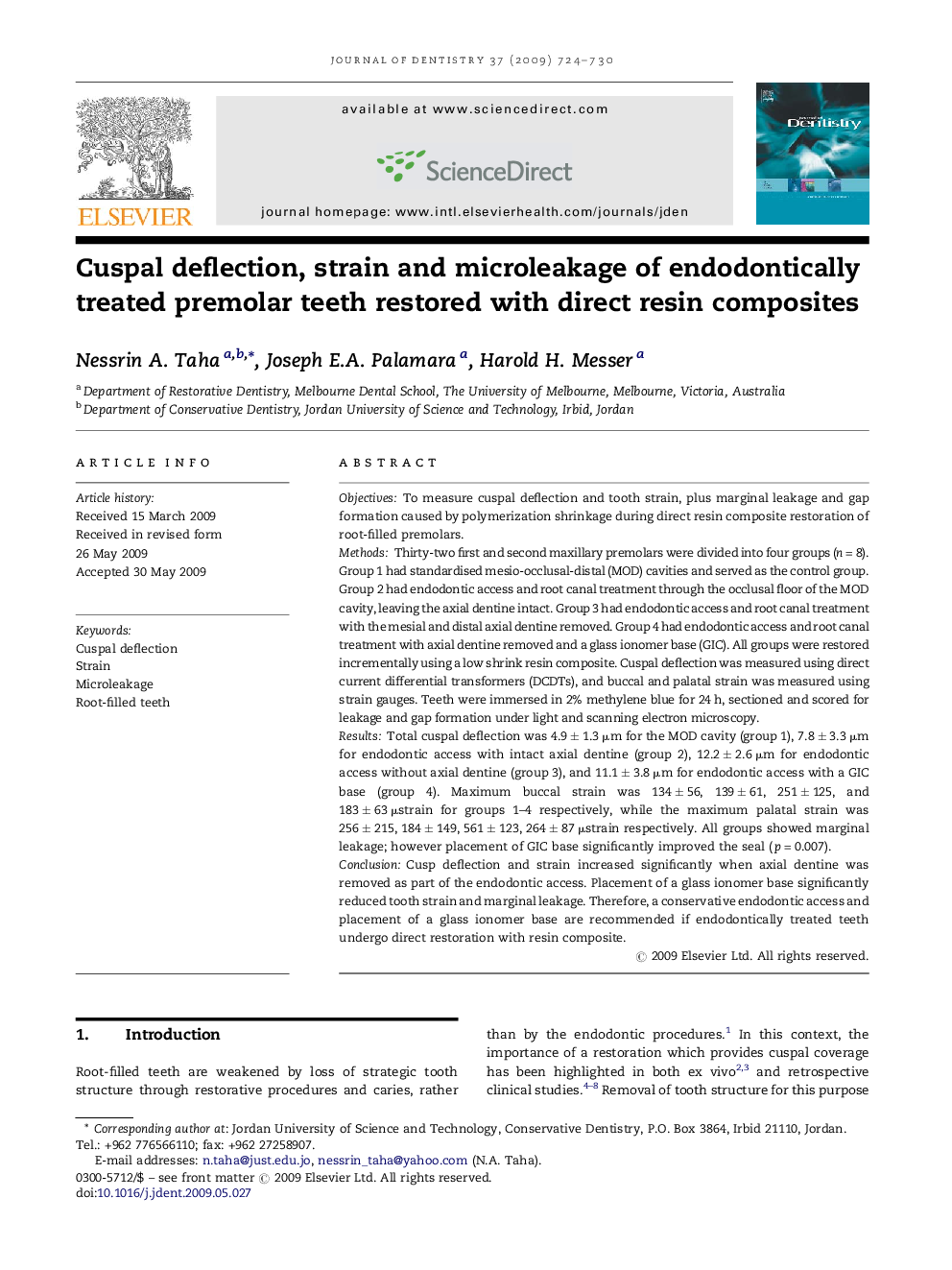| کد مقاله | کد نشریه | سال انتشار | مقاله انگلیسی | نسخه تمام متن |
|---|---|---|---|---|
| 3145697 | 1197096 | 2009 | 7 صفحه PDF | دانلود رایگان |

ObjectivesTo measure cuspal deflection and tooth strain, plus marginal leakage and gap formation caused by polymerization shrinkage during direct resin composite restoration of root-filled premolars.MethodsThirty-two first and second maxillary premolars were divided into four groups (n = 8). Group 1 had standardised mesio-occlusal-distal (MOD) cavities and served as the control group. Group 2 had endodontic access and root canal treatment through the occlusal floor of the MOD cavity, leaving the axial dentine intact. Group 3 had endodontic access and root canal treatment with the mesial and distal axial dentine removed. Group 4 had endodontic access and root canal treatment with axial dentine removed and a glass ionomer base (GIC). All groups were restored incrementally using a low shrink resin composite. Cuspal deflection was measured using direct current differential transformers (DCDTs), and buccal and palatal strain was measured using strain gauges. Teeth were immersed in 2% methylene blue for 24 h, sectioned and scored for leakage and gap formation under light and scanning electron microscopy.ResultsTotal cuspal deflection was 4.9 ± 1.3 μm for the MOD cavity (group 1), 7.8 ± 3.3 μm for endodontic access with intact axial dentine (group 2), 12.2 ± 2.6 μm for endodontic access without axial dentine (group 3), and 11.1 ± 3.8 μm for endodontic access with a GIC base (group 4). Maximum buccal strain was 134 ± 56, 139 ± 61, 251 ± 125, and 183 ± 63 μstrain for groups 1–4 respectively, while the maximum palatal strain was 256 ± 215, 184 ± 149, 561 ± 123, 264 ± 87 μstrain respectively. All groups showed marginal leakage; however placement of GIC base significantly improved the seal (p = 0.007).ConclusionCusp deflection and strain increased significantly when axial dentine was removed as part of the endodontic access. Placement of a glass ionomer base significantly reduced tooth strain and marginal leakage. Therefore, a conservative endodontic access and placement of a glass ionomer base are recommended if endodontically treated teeth undergo direct restoration with resin composite.
Journal: Journal of Dentistry - Volume 37, Issue 9, September 2009, Pages 724–730